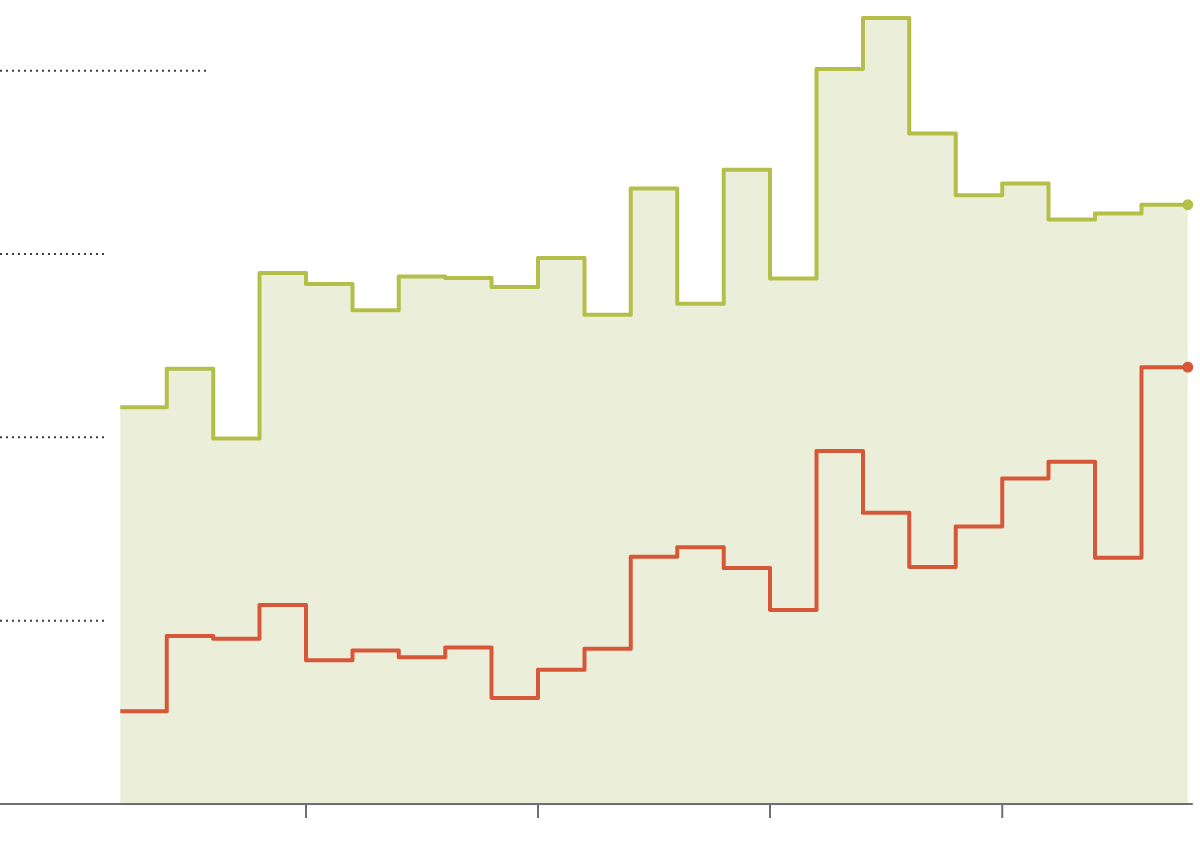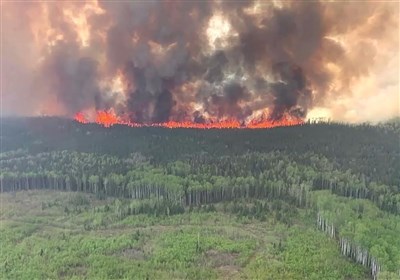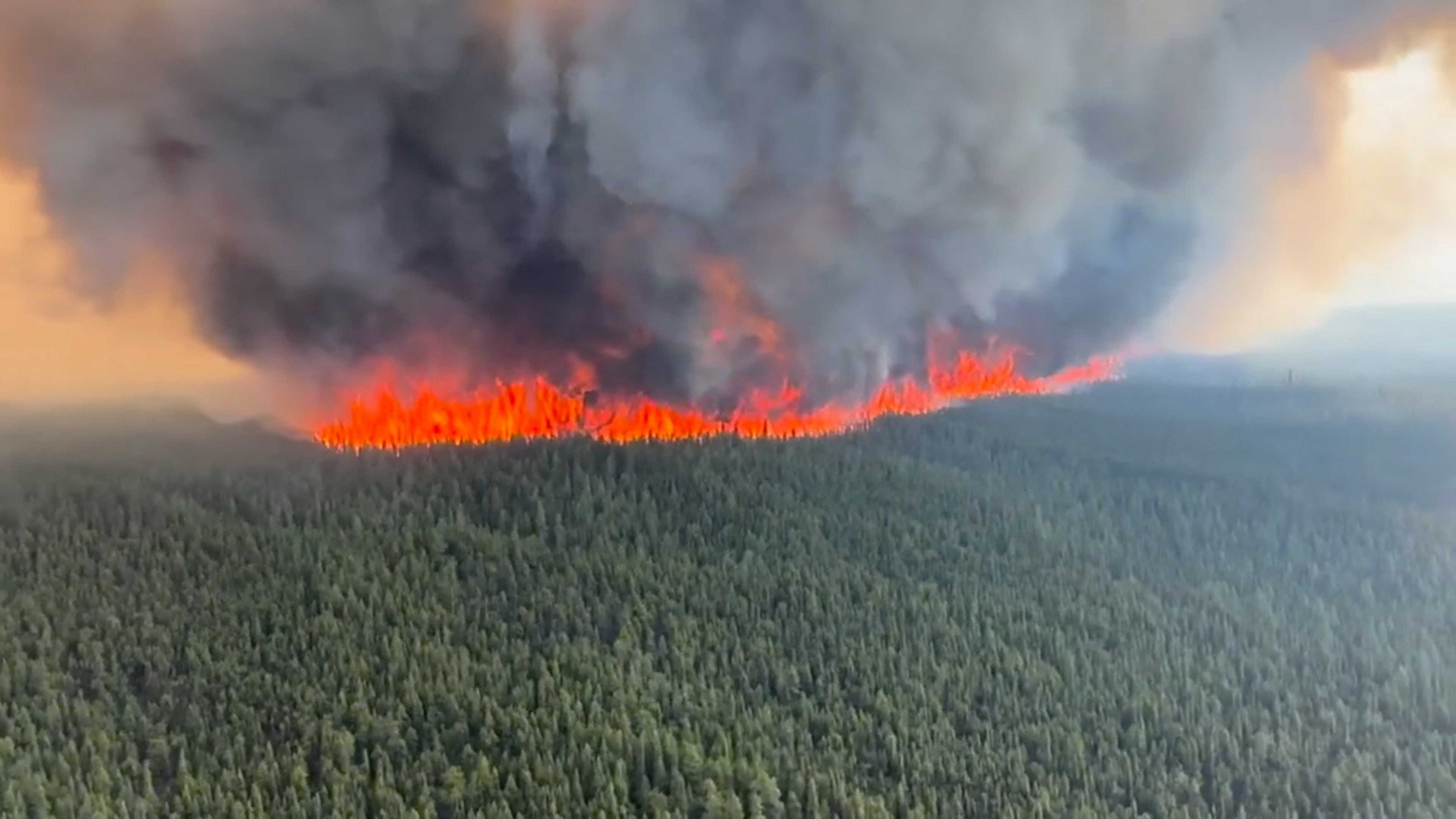Landslide Risk Forces Evacuation In Swiss Mountain Village

Table of Contents
The Imminent Landslide Threat
The increased landslide risk stems from a confluence of geological factors, culminating in a precarious situation. Recent weeks have seen exceptionally heavy rainfall, saturating the already unstable soil of the mountainside. This prolonged period of intense precipitation, coupled with pre-existing geological weaknesses in the rock formations, has significantly increased the probability of a major landslide. Geological surveys conducted by experts from the Swiss Federal Institute for Forest, Snow and Landscape Research (WSL) revealed worrying signs, including the appearance of new cracks and measurable movement in the mountainside. These findings, combined with sophisticated modelling, predict a high probability of a major landslide occurring in the near future. The risk factors contributing to this perilous situation include:
- Recent heavy rainfall: Prolonged periods of intense precipitation saturated the soil, reducing its shear strength and increasing its susceptibility to movement.
- Geological surveys: These revealed significant cracks and measurable movement in the mountainside, indicating instability and potential failure.
- Slope instability: The steep incline of the mountainside, combined with the saturated soil, contributes significantly to the instability.
- Soil erosion: Previous erosion events have weakened the soil structure, making it more vulnerable to landslides.
- Pre-existing weaknesses: Geological weaknesses in the underlying rock formations have been exacerbated by recent weather conditions.
Evacuation Procedures and Resident Response
Following the alarming geological assessments, authorities issued mandatory evacuation orders for the entire village. Residents were given relatively short notice to evacuate their homes, leading to a hurried and stressful departure. The emergency response was swift and organized, with emergency services providing transportation and temporary accommodation for the displaced residents in nearby towns and villages. Local charities and support groups swiftly mobilized, offering essential aid, including food, clothing, and emotional support to those affected. The community's response was largely characterized by cooperation and resilience, with neighbors helping neighbors in this time of crisis. However, the sudden disruption and uncertainty surrounding the future have created significant challenges for many.
- Mandatory evacuation orders: Authorities acted decisively to ensure the safety of the residents.
- Short notice evacuation: The rapid deterioration of the situation necessitated a quick response, leaving little time for residents to prepare.
- Emergency services assistance: Transportation, temporary housing, and basic necessities were provided to those evacuated.
- Community support: Local charities and support groups are providing crucial aid and assistance to displaced residents.
Long-Term Implications and Future Risk Mitigation
The immediate crisis necessitates a comprehensive assessment of the long-term implications. Engineers are conducting a thorough assessment of the mountainside's long-term stability, aiming to determine the feasibility of rebuilding the village in the future. The environmental impact of any potential landslide is also a significant concern, with potential consequences for local flora and fauna, as well as water resources. Moving forward, experts strongly recommend implementing long-term landslide prevention measures. This may involve sophisticated slope stabilization techniques, improved drainage systems, and the creation of early warning systems to monitor future instability. The incident underscores the urgent need for enhanced risk assessment and improved early warning systems in similar mountainous regions.
- Long-term stability assessment: Engineers are assessing the mountainside's stability to determine the possibility of future inhabitation.
- Rebuilding considerations: Discussions are underway on the feasibility of rebuilding the village, taking into account long-term safety.
- Landslide prevention measures: Experts are recommending various measures, including slope stabilization and improved drainage.
- Enhanced risk assessment: The event highlights the need for improved risk assessment and early warning systems globally.
Impact on Tourism and the Local Economy
The evacuation has significant implications for the local economy, particularly the tourism sector, a major source of income for the region. The closure of the village, coupled with the uncertainty surrounding its future, will likely deter tourists from visiting the area in the foreseeable future. This will impact businesses reliant on tourism, potentially resulting in economic hardship for the entire region. The long-term effects on the regional economy need to be carefully considered and addressed as part of the recovery and reconstruction efforts.
Conclusion
The landslide risk in the Swiss mountain village has forced a mass evacuation, dramatically illustrating the devastating impact of natural disasters and underlining the critical importance of proactive risk assessment and effective mitigation strategies. This event underscores the urgent need for robust emergency response plans and comprehensive long-term strategies to protect vulnerable communities in high-risk areas. The experience highlights the necessity of ongoing monitoring, improved infrastructure, and community preparedness to minimize the impact of future landslide events.
Call to Action: Stay informed about landslide risks in your area and learn about preventative measures. Understanding the signs of potential landslides and knowing what to do in an emergency can save lives. Learn more about landslide safety and preparedness by researching local resources and government guidelines related to landslide risk and natural disaster preparedness.

Featured Posts
-
 Thqyq Hjwm Sfart Alahtlal Mn Hw Mutlq Alnar Wma Hy Dwafeh
May 23, 2025
Thqyq Hjwm Sfart Alahtlal Mn Hw Mutlq Alnar Wma Hy Dwafeh
May 23, 2025 -
 Las Novedades En La Convocatoria De Instituto Y El Probable Equipo Ante Lanus
May 23, 2025
Las Novedades En La Convocatoria De Instituto Y El Probable Equipo Ante Lanus
May 23, 2025 -
 Qmrt Mnst Ibdaeyt Lsnae Alaflam Alqtryyn
May 23, 2025
Qmrt Mnst Ibdaeyt Lsnae Alaflam Alqtryyn
May 23, 2025 -
 Le Gouvernement Sud Coreen Alloue 8 6 Milliards De Dollars Pour Pallier Les Droits De Douane Et Les Catastrophes Naturelles
May 23, 2025
Le Gouvernement Sud Coreen Alloue 8 6 Milliards De Dollars Pour Pallier Les Droits De Douane Et Les Catastrophes Naturelles
May 23, 2025 -
 Alashtbah Yqe Ela Ilyas Rwdryjyz Fy Qdyt Mqtl Mwzfyn Balsfart Alisrayylyt Bwashntn
May 23, 2025
Alashtbah Yqe Ela Ilyas Rwdryjyz Fy Qdyt Mqtl Mwzfyn Balsfart Alisrayylyt Bwashntn
May 23, 2025
Latest Posts
-
 Rampant Wildfires Push Global Forest Loss To Record Levels
May 23, 2025
Rampant Wildfires Push Global Forest Loss To Record Levels
May 23, 2025 -
 French Prosecutors Implicate Malaysias Najib Razak In 2002 Submarine Bribery Case
May 23, 2025
French Prosecutors Implicate Malaysias Najib Razak In 2002 Submarine Bribery Case
May 23, 2025 -
 Wildfires Intensify Global Forest Loss A Record Breaking Year
May 23, 2025
Wildfires Intensify Global Forest Loss A Record Breaking Year
May 23, 2025 -
 Global Forest Destruction Wildfires Drive Unprecedented Losses
May 23, 2025
Global Forest Destruction Wildfires Drive Unprecedented Losses
May 23, 2025 -
 Rethinking Middle Management Their Vital Role In A Changing Workplace
May 23, 2025
Rethinking Middle Management Their Vital Role In A Changing Workplace
May 23, 2025
